 Facebook
Facebook
 X
X
 Instagram
Instagram
 TikTok
TikTok
 Youtube
Youtube
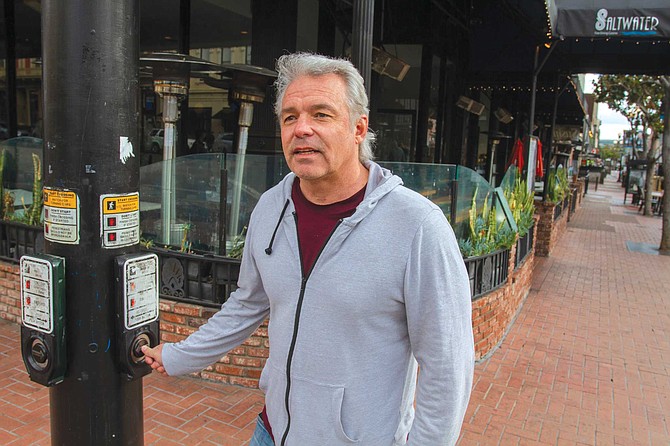
We’re all lawbreakers. Each of us. Every one of us. Ever go over the speed limit on the freeway? Then you broke the law. Walk your dog on the Oceanside Pier, or let your puppy romp at a city park in Carlsbad? You’re a lawbreaker. How many of you have snatched a cardboard box from your neighbor’s recycling bin, figuring it will save you a trip to Staples next time you sell something on eBay? Or bet your buddy Mike twenty bucks on the last hand at your monthly poker game? Scofflaws, the lot of you!
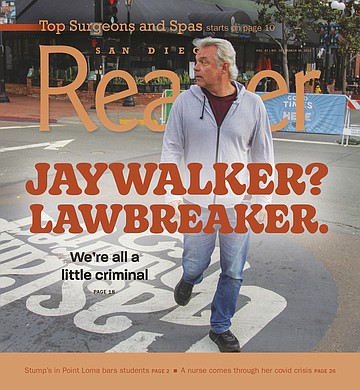
There are plenty of laws on the books, and most of us do a pretty good job at obeying them. Personally, I’ve never shot someone, stolen a car or broken into my neighbor’s house and snatched his Rolex watch. But I routinely go 80 in the fast lane on the freeway, let my dog roam leash-free on a city park trail near my house, and sometimes lay down a small bet in a friendly neighborhood card game. Yeah, I know. I broke the law.
Here are some laws that some of us, most of us, all of us, break at least occasionally.
Born to Run
You don’t have to be a fan of Bruce Springsteen’s get-out-of-town anthem to let loose a little on the freeway. The typical speed in the fast lane on local freeways is around 80 miles per hour; there have been many instances in which drivers going 70 in the left lane are honked at, tailgated and then sped around by a finger-flipping lunatic who at times might look a lot like me. It’s a go-with-the-flow-of-traffic thing, you know?
But according to Officer Jake Sanchez, the public information officer for the Border Division of the California Highway Patrol, technically, anyone going 66 miles per hour or more on the freeway is breaking the law. “On most of our freeways, you have a maximum speed of 65, so in theory, anyone who travels in excess of that speed is in violation of that specific vehicle code,” Sanchez says. “I’ve heard people say ‘flow of traffic’ and those types of things, but that doesn’t apply to the law, at least not on freeways.”
Still, it’s not a law that gets enforced much, simply because there are far too many violators. “If you had 600 CHP officers out there, you could probably enforce that, but on a daily basis, if I issued a citation for everyone going 66 miles per hour or more, I don’t think I’d ever make it back to the office,” Sanchez says. The CHP’s policy, then, is one of selective enforcement. “Usually, the officer just uses his or her best judgment,” Sanchez says. “Typically, we try to cite, or remove, the most egregious violators. You might be doing 80, but if there’s another person diving in and out of traffic at 75 miles per hour, based on the officer’s discretion, then that’s who’s going to get pulled over.” Similarly, Sanchez says, when multiple violations are occurring at the same time — in other words, when everyone’s doing 80 in the fast lane — “the officer would stop the person who’s causing the biggest hazard.”
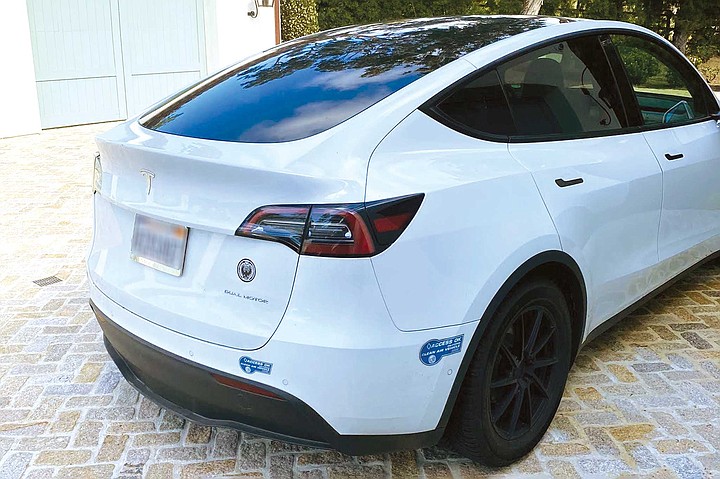
The CHP has no statistics on what percentage of drivers exceed the speed limit. “There’s no way for us to quantify that,” Sanchez says. “There’s no camera system, and when one of our officers is driving on the freeway it’s amazing how everyone becomes courteous and just the best driver out there. Of course, as soon as he leaves, the checkered flag waves and people are flying and racing again.”
Other commonly broken laws on the county’s network of freeways include cellphone use, the absence of a front license plate, or cars using the carpool lane without an additional passenger — or, in the case of electric vehicles, a sticker exempting them from the multiple-passenger rule. “I once stopped a Tesla in the HOV lane and the driver said he didn’t want to put the sticker on the car because he didn’t want to mess up the car,” Sanchez says. “I didn’t cite him, but I told him, ‘If I see you again without that sticker, I’m going to. This is a warning.’”
And, contrary to what many people think, using a turn signal is not an option. It’s the law. California Vehicle Code 22108 requires all drivers to signal at least 100 feet before making a turn or changing lanes. “This one is really open to the interpretation of the officer,” Sanchez says. “If you point out there’s no one else on the road and you’re out there by yourself, there’s no requirement for you to use a turn signal. It’s only when somebody else is out there who might be affected by your motion.” But the law doesn’t specifically mention the presence of other motorists as a deciding factor. “It’s case law,” Sanchez says. “I don’t remember the specifics, but the case involved an officer sitting in his car up against the curve who observed a person coming to the light, entering the left-turn lane and making a left turn without signaling. The case was dismissed based on the fact that no one was affected by his turning movement.”
Walk This Way
Ron Donoho is gaining a reputation as Mr. Downtown. He’s the editor of the San Diego Sun, an online publication devoted exclusively to Downtown news, events and happenings. Asked if he’s noticed any commonly broken laws, he’s quick to single out jaywalking. “There was a span of time when police would crack down on it, but I would say that police could go down to the Gaslamp Quarter on any given day and fill out their quotas,” he says. Then he adds, “I do not encourage jaywalking, nor do I encourage people to crack down on jaywalking.”
I asked Donoho, who lives and works Downtown, whether he ever jaywalks.
“Is this on the record?”
“Yes.”
“No comment.”
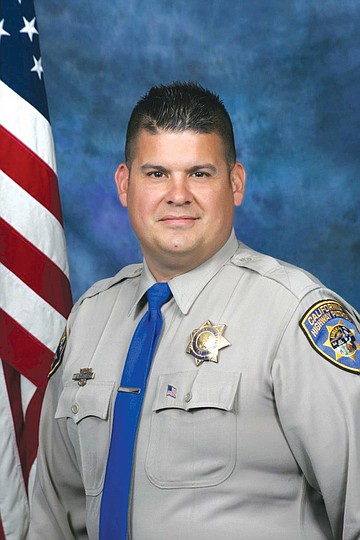
Lieutenant Adam Sharki, the spokesman for the San Diego Police Department, wasn’t nearly as forthcoming as the CHP’s Sanchez when I asked him about jaywalking — not just in the Gaslamp Quarter, but also in other popular destination neighborhoods such as Little Italy or Pacific Beach around Grand and Garnet. Jaywalking, of course, is when people dash across the street under the premise that the shortest distance between the beer pub and the taco stand is a straight line. Who wants to wait at a crosswalk for the light to turn green and the walk sign to come on when there’s a cold Sculpin IPA waiting for you at Ballast Point Little Italy? “I am not commenting on this article, but for the sake of helping you with your research, here are some relevant sections of the law that might be useful,” Sharki wrote in an email. Looking over what he sent me, and translating the legalese that the people who write these codes seem to love, here’s what I came up with: if you cross a street, with a traffic light on either end, at any point other than a crosswalk, you’re breaking the law — although your crime is considered an infraction, and the worst you’ll get is a citation and fine.
I sort of knew that. What I didn’t know is that even if you’re at a crosswalk and the light is green, you better make sure the walk sign is on, as well. This law, in its entirety, reads:
California Vehicle Code 21456: If a pedestrian control signal showing the words “WALK” or “WAIT” or “DON’T WALK” or other approved symbol is in place, the signal shall indicate as follows:
(a) A “WALK” or approved “Walking Person” symbol means a pedestrian facing the signal may proceed across the roadway in the direction of the signal, but shall yield the right-of-way to vehicles lawfully within the intersection at the time that signal is first shown.
(b) A flashing “DON’T WALK” or “WAIT” or approved “Upraised Hand” symbol with a “countdown” signal indicating the time remaining for a pedestrian to cross the roadway means a pedestrian facing the signal may start to cross the roadway in the direction of the signal but must complete the crossing prior to the display of the steady “DON’T WALK” or “WAIT” or approved “Upraised Hand” symbol when the “countdown” ends.
(c) A steady “DON’T WALK” or “WAIT” or approved “Upraised Hand” symbol or a flashing “DON’T WALK” or “WAIT” or approved “Upraised Hand” without a “countdown” signal indicating the time remaining for a pedestrian to cross the roadway means a pedestrian facing the signal shall not start to cross the roadway in the direction of the signal, but any pedestrian who started the crossing during the display of the “WALK” or approved “Walking Person” symbol and who has partially completed crossing shall proceed to a sidewalk or safety zone or otherwise leave the roadway while the steady “WAIT” or “DON’T WALK” or approved “Upraised Hand” symbol is showing.
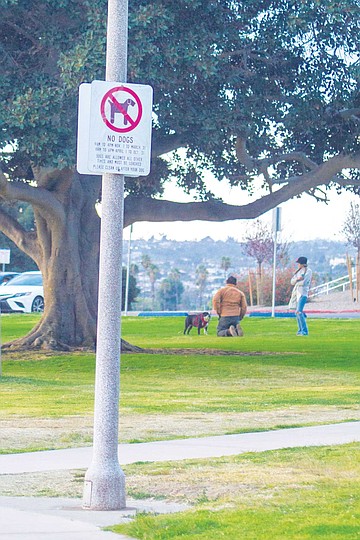
Recently, there’s been a move to decriminalize jaywalking. Last year, Virginia became the first state in the country to strike down jaywalking laws. Then, in September, California Democratic Assemblyman Phil Ting introduced a bill to do the same here in the Golden State. Ting represents the state’s 19th Assembly District, which includes western San Francisco and northwestern San Mateo County. His argument for legalizing jaywalking hinged on his belief that the crime is arbitrarily enforced, mostly against people of color, and has led to deadly confrontations, such as the 2020 fatal shooting of Kurt Reinhold, a 42-year-old Black man, by Orange County sheriff’s deputies in a struggle after Reinhold was stopped for jaywalking. Ting’s bill also maintains that jaywalking fines, typically just under $200, are too costly. His bill would have instead required pedestrians to simply exercise caution when crossing the street. But in October, Governor Gavin Newsom vetoed the Ting’s bill, citing data that showed California has the highest number of pedestrian deaths in the country. In a statement, Newsom said he would instead work with lawmakers to come up with some sort of legislation that “addresses the unequal enforcement of jaywalking laws in a manner that does not risk worsening California’s pedestrian safety.”
Laws against jaywalking, incidentally, date back to the early 1900s, when the surge in automobile traffic led to a rising number of pedestrian deaths. The term itself is something of a public shaming tool, as “jay” at the time referred to a hick or, as Hillary Clinton would say, a “deplorable.”
Who Let the Dogs Out?
Each week, I make it a point to visit Oceanside at least once for a six-mile walk along the strand, including three back-and-forth walks along the wooden pier, which accounts for two of those miles. Whenever I go, I generally see at least three or four people with their dogs, even though there is a prominently displayed sign at the base of the pier that expressly says dogs are forbidden. The other day, as I often do, I heard a lifeguard announcement over the loudspeaker: “As a reminder, dogs are not allowed on the pier.” The announcement came just as I was passing a couple walking their German Shepherd. The woman said, “That must be new.”
Oceanside Lifeguard Sergeant Greg Trebbe later told me, “Dogs have been prohibited on the pier for as long as I can remember – it’s in the city’s municipal code. And there’s a number of reasons for that. One is cleanliness and sanitation; if a dog relieves himself on the pier, it goes right into the ocean. The other is the tight space. Dogs can obstruct the flow of pedestrians, especially if they’re on a long leash.” I noted that I see dogs on the pier every time I walk there. Trebbe said, “It does happen fairly frequently. We like to think it’s just people missing the signs. We try to enforce it by education. We have posted signage, but if someone misses it we try to educate them by making routine announcements. If we observe someone with a dog, it varies — it depends on the weather and the time of year, but we try to enforce it daily.”
The pier is not the only spot where dogs are prohibited. Dogs also are not allowed on any of the Oceanside city beaches, nor are they allowed in city parks in Carlsbad. “No matter how careful we are with our animals, there is still the opportunity for kids to step in their waste,” says Carlsbad Mayor Matt Hall. “Let’s say you have kids playing on the grass. Even if you wipe up dog poop, there’s still residue. Any time you have animals and people in the same place, there are cleanliness issues.”
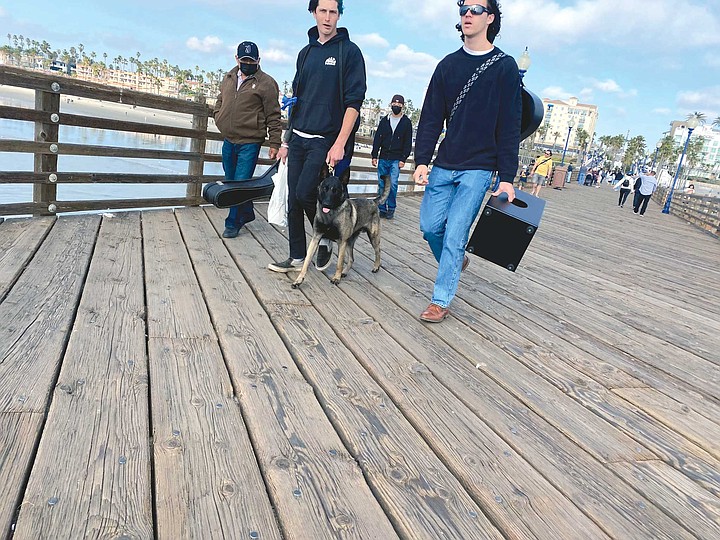
The dog ban at Carlsbad city parks recently triggered a fierce debate on the Nextdoor website, after a resident complained that he and his two boys were booted out of a neighborhood park. “With much attitude, the officer made me aware of the no dog sign posted by the street. Dogs are not allowed in Carlsbad parks, but non-service dogs are allowed in restaurants and grocery stores. So thank you for allowing me to disbelieve hope in humanity during the holiday season.” The post attracted more than one hundred comments, fairly evenly divided between those who supported the ban and those who didn’t. “Laws are there for a reason and I’m glad it was enforced,” wrote one fellow Carlsbad resident. Another chimed in, “Then maybe people with dogs should comply with the existing laws and rules…. My grandchildren have been attacked by dogs that are leashed in parks that are posted with ‘no dogs’ signs… Rules apply to everyone. I have chosen not to go to the park with my grandchildren many times because there are dogs there that shouldn’t be there in the first place.” Countering those comments, one poster wrote, “No dogs in a park? On a leash? What kind of BS rule is that? Move to Oceanside or Encinitas where you can take your dog with you everywhere you go…. That is ridiculous!”
In the city of San Diego, dogs are banned from all city beaches during daylight hours, except for designated “dog beaches” in north Ocean Beach and Fiesta Island. In 2018, a KPBS analysis found that between 2015 and 2017, more than 600 citations were issued to people breaking these rules, nearly half of them in Mission Bay Park, where the dog ban extends to the walkways and grassy areas.
Garbage Man Blues
Buddy Guy’s classic ode to what are now politely called “sanitation engineers” came along before the concept of separate bins for recycling and greens. But the art of trash picking, or scavenging, predates both. Who hasn’t been to a public park or beach and seen someone with a large trash bag picking bottles and cans out of trash cans in the hope of earning a few dollars at the recycling center? And who hasn’t dug a perfectly good cardboard box out of a neighbor’s recycling bin because you were cleaning out Junior’s room and needed a container of some sort to pack away all those participation trophies? Maybe think twice. According to the city of San Diego’s Environmental Services website, scavenging — defined as “the act of unauthorized persons going through recycling or refuse containers” — “is a crime in San Diego, and it is taken very seriously by the city. Every year, scavengers steal thousands of dollars in recyclables from the city’s curbside program, which makes the program less cost efficient and ultimately costs taxpayers…. To help stop this crime, the city encourages anyone who encounters a scavenging incident that has already taken place to report it.”
Bicycle Race
Bicyclists have quite a bit of freedom these days. Not only do they have more and more dedicated bike lanes, but they also get to share the road with cars in tight spaces, and back in 2014, then-Governor Jerry Brown signed into law what is now California Vehicle Code 21760, which instructs drivers to maintain a buffer at least three feet wide when passing a bicyclist on the road. That’s a law you see people break all the time, simply because on many roads, including South Pacific Street in Oceanside, there’s simply not enough room on the right side of the street to legally pass a bicyclist. Some cautious drivers will patiently follow a bicycle rider at a low, low speed, while others will pass once there’s no traffic coming from the opposite side. But quite often, drivers will cruise by bicyclists with just inches separating the two, prompting some bicyclists to move to the sidewalk as a safety precaution.
Then there are mountain bikers — many of whom routinely break the law, sometimes unknowingly, something willingly. That’s because the rules seem to change all the time. Most trails at city, county and state parks are to be shared by hikers and mountain bikers, while others, like the 4000-acre Los Peñasquitos Canyon Preserve, which is under the jurisdiction of the city of San Diego, allow both to use the main trail, while little side trails are reserved exclusively for foot traffic. But some mountain bikers don’t like that rule, which is why hikers are always urged to be on the lookout for speeding bikes. The problems at Los Peñasquitos, however, are nowhere near as severe as the hiker vs. biker showdown at the Carlsbad Highlands Ecological Reserve, situated between Carlsbad and Oceanside. The 473-acre site consists mostly of coastal sage scrub and grasslands. The wildlife there, according to the reserve’s website, includes California gnatcatchers, sharp-shinned hawks, black-shouldered kites, turkey vultures and golden eagles. The trails that criss-cross the reserve — known as Las Calaveras Trails, after the volcanic plug known as Mount Calavera in the north — were popular with mountain bikers for years. Then, in 2000, the area was declared an ecological reserve, and trail bikes were banned. Still, the area remained pretty much a free-for-all until the state’s Department of Fish and Wildlife began cracking down on mountain biking, posting signs and sending in squads of officers to enforce the ban, violations of which could result in fines of up to $250.
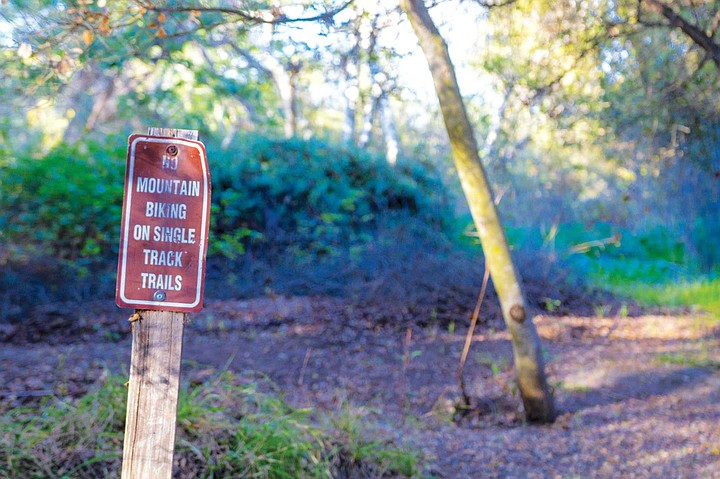
One veteran mountain biker, who asked his name not be used, said the result is mass confusion, since some of the trails, on the north side, are part of the 110-acre Lake Calavera Preserve, which is under the jurisdiction of the city of Carlsbad. There, mountain bikes are still welcome. “There are access points to the trails in the Lake Calavera Preserve that are closed to mountain bikers simply because they are part of the Ecological Reserve, so it’s a huge inconvenience, depending on where you live,” he says. “A lot of us have to ride through the closed part to get to the open part, and those are things mountain bikers do all the time — and which I consider perfectly reasonable.” He admits to be being irked that the bulk of the open space, in the Ecological Reserve, is closed to bikers, “simply because someone bitched and moaned about it.” He’d like to see the area reopened to mountain bikers, at least during the night, when there are no hikers, “but I’m not holding my breath.”
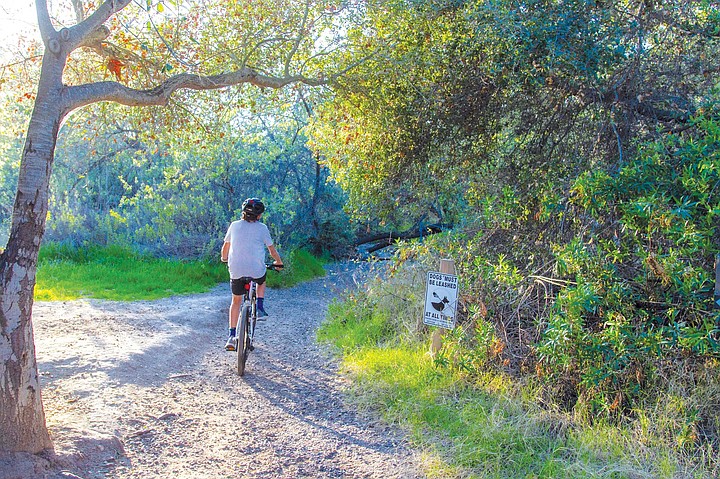
The emergence of e-bikes has complicated matters even further, since many bike trails are off limits to motorized vehicles of any sort. Lately, there’s been such a scattered approach to regulating e-bikes that it’s sometimes tough to know whether you’re breaking the law or not. Last April, the city of Huntington Beach voted to strike down a previous ban on electric bikes on the concrete walkway fronting the beach, which had been put in place four years earlier, before the vehicles’ popularity erupted. Conversely, last December, the San Clemente City Council drafted a law banning e-bikes from most trails near the coast, including the pier and the popular path to Trestles, a popular surf beach on the south end of town. In December of 2019, San Diego banned e-bikes and motorized scooters from the Mission Beach boardwalk, while in Oceanside, e-bikes are banned from the beach, a popular biking spot at low tide. “We get a lot of complaints about that,” said Oceanside Lifeguard Sergeant Greg Trebbe.
I Fought the Law
Other commonly broken laws in the San Diego area, based on discussions with law enforcement and various other folks:
Throwing out mail addressed to a prior occupant, even if it’s junk mail. This is a felony under federal law. The U.S. Postal Service says the only way to dispose of such mail is to write “Return to sender” or “No longer at this address” on the envelope and put it back into the mailbox. This will alert the post office to hand-inspect the mail. (A side note: I’ve tried this, only to find the same letter in my mailbox the next day. The letter carrier either left it there or put it back.)
Gambling in your own home, provided one of you acts as a “bank” and takes a percentage of the winnings.
Peeing in public. While California law only prohibits public urination “in a public transportation vehicle,” under San Diego’s Municipal Code, it’s illegal to urinate in public or in a space exposed to public view. No-potty zones include a street, sidewalk, alley, plaza, park, beach, or public building. But as anyone who’s gone for a long morning walk after a couple of cups of coffee can tell you, Mother Nature sometimes has other ideas.
It should be noted that the majority of these laws are infractions, and even if you get busted you will likely get off with warning, nothing else. A statement from city attorney Mara W. Elliott’s office essentially says as much: “Our office allocates our limited resources on matters most important to San Diegans. To prioritize, we review complaints receiv ed by city departments, including our own, and partner agencies to identify trends in criminal activity. We encourage San Diegans to report general concerns using the city’s Get It Done application, and law enforcement concerns to the San Diego Police Department.”


We’re all lawbreakers. Each of us. Every one of us. Ever go over the speed limit on the freeway? Then you broke the law. Walk your dog on the Oceanside Pier, or let your puppy romp at a city park in Carlsbad? You’re a lawbreaker. How many of you have snatched a cardboard box from your neighbor’s recycling bin, figuring it will save you a trip to Staples next time you sell something on eBay? Or bet your buddy Mike twenty bucks on the last hand at your monthly poker game? Scofflaws, the lot of you!

There are plenty of laws on the books, and most of us do a pretty good job at obeying them. Personally, I’ve never shot someone, stolen a car or broken into my neighbor’s house and snatched his Rolex watch. But I routinely go 80 in the fast lane on the freeway, let my dog roam leash-free on a city park trail near my house, and sometimes lay down a small bet in a friendly neighborhood card game. Yeah, I know. I broke the law.
Here are some laws that some of us, most of us, all of us, break at least occasionally.
Born to Run
You don’t have to be a fan of Bruce Springsteen’s get-out-of-town anthem to let loose a little on the freeway. The typical speed in the fast lane on local freeways is around 80 miles per hour; there have been many instances in which drivers going 70 in the left lane are honked at, tailgated and then sped around by a finger-flipping lunatic who at times might look a lot like me. It’s a go-with-the-flow-of-traffic thing, you know?
But according to Officer Jake Sanchez, the public information officer for the Border Division of the California Highway Patrol, technically, anyone going 66 miles per hour or more on the freeway is breaking the law. “On most of our freeways, you have a maximum speed of 65, so in theory, anyone who travels in excess of that speed is in violation of that specific vehicle code,” Sanchez says. “I’ve heard people say ‘flow of traffic’ and those types of things, but that doesn’t apply to the law, at least not on freeways.”
Still, it’s not a law that gets enforced much, simply because there are far too many violators. “If you had 600 CHP officers out there, you could probably enforce that, but on a daily basis, if I issued a citation for everyone going 66 miles per hour or more, I don’t think I’d ever make it back to the office,” Sanchez says. The CHP’s policy, then, is one of selective enforcement. “Usually, the officer just uses his or her best judgment,” Sanchez says. “Typically, we try to cite, or remove, the most egregious violators. You might be doing 80, but if there’s another person diving in and out of traffic at 75 miles per hour, based on the officer’s discretion, then that’s who’s going to get pulled over.” Similarly, Sanchez says, when multiple violations are occurring at the same time — in other words, when everyone’s doing 80 in the fast lane — “the officer would stop the person who’s causing the biggest hazard.”

The CHP has no statistics on what percentage of drivers exceed the speed limit. “There’s no way for us to quantify that,” Sanchez says. “There’s no camera system, and when one of our officers is driving on the freeway it’s amazing how everyone becomes courteous and just the best driver out there. Of course, as soon as he leaves, the checkered flag waves and people are flying and racing again.”
Other commonly broken laws on the county’s network of freeways include cellphone use, the absence of a front license plate, or cars using the carpool lane without an additional passenger — or, in the case of electric vehicles, a sticker exempting them from the multiple-passenger rule. “I once stopped a Tesla in the HOV lane and the driver said he didn’t want to put the sticker on the car because he didn’t want to mess up the car,” Sanchez says. “I didn’t cite him, but I told him, ‘If I see you again without that sticker, I’m going to. This is a warning.’”
And, contrary to what many people think, using a turn signal is not an option. It’s the law. California Vehicle Code 22108 requires all drivers to signal at least 100 feet before making a turn or changing lanes. “This one is really open to the interpretation of the officer,” Sanchez says. “If you point out there’s no one else on the road and you’re out there by yourself, there’s no requirement for you to use a turn signal. It’s only when somebody else is out there who might be affected by your motion.” But the law doesn’t specifically mention the presence of other motorists as a deciding factor. “It’s case law,” Sanchez says. “I don’t remember the specifics, but the case involved an officer sitting in his car up against the curve who observed a person coming to the light, entering the left-turn lane and making a left turn without signaling. The case was dismissed based on the fact that no one was affected by his turning movement.”
Walk This Way
Ron Donoho is gaining a reputation as Mr. Downtown. He’s the editor of the San Diego Sun, an online publication devoted exclusively to Downtown news, events and happenings. Asked if he’s noticed any commonly broken laws, he’s quick to single out jaywalking. “There was a span of time when police would crack down on it, but I would say that police could go down to the Gaslamp Quarter on any given day and fill out their quotas,” he says. Then he adds, “I do not encourage jaywalking, nor do I encourage people to crack down on jaywalking.”
I asked Donoho, who lives and works Downtown, whether he ever jaywalks.
“Is this on the record?”
“Yes.”
“No comment.”

Lieutenant Adam Sharki, the spokesman for the San Diego Police Department, wasn’t nearly as forthcoming as the CHP’s Sanchez when I asked him about jaywalking — not just in the Gaslamp Quarter, but also in other popular destination neighborhoods such as Little Italy or Pacific Beach around Grand and Garnet. Jaywalking, of course, is when people dash across the street under the premise that the shortest distance between the beer pub and the taco stand is a straight line. Who wants to wait at a crosswalk for the light to turn green and the walk sign to come on when there’s a cold Sculpin IPA waiting for you at Ballast Point Little Italy? “I am not commenting on this article, but for the sake of helping you with your research, here are some relevant sections of the law that might be useful,” Sharki wrote in an email. Looking over what he sent me, and translating the legalese that the people who write these codes seem to love, here’s what I came up with: if you cross a street, with a traffic light on either end, at any point other than a crosswalk, you’re breaking the law — although your crime is considered an infraction, and the worst you’ll get is a citation and fine.
I sort of knew that. What I didn’t know is that even if you’re at a crosswalk and the light is green, you better make sure the walk sign is on, as well. This law, in its entirety, reads:
California Vehicle Code 21456: If a pedestrian control signal showing the words “WALK” or “WAIT” or “DON’T WALK” or other approved symbol is in place, the signal shall indicate as follows:
(a) A “WALK” or approved “Walking Person” symbol means a pedestrian facing the signal may proceed across the roadway in the direction of the signal, but shall yield the right-of-way to vehicles lawfully within the intersection at the time that signal is first shown.
(b) A flashing “DON’T WALK” or “WAIT” or approved “Upraised Hand” symbol with a “countdown” signal indicating the time remaining for a pedestrian to cross the roadway means a pedestrian facing the signal may start to cross the roadway in the direction of the signal but must complete the crossing prior to the display of the steady “DON’T WALK” or “WAIT” or approved “Upraised Hand” symbol when the “countdown” ends.
(c) A steady “DON’T WALK” or “WAIT” or approved “Upraised Hand” symbol or a flashing “DON’T WALK” or “WAIT” or approved “Upraised Hand” without a “countdown” signal indicating the time remaining for a pedestrian to cross the roadway means a pedestrian facing the signal shall not start to cross the roadway in the direction of the signal, but any pedestrian who started the crossing during the display of the “WALK” or approved “Walking Person” symbol and who has partially completed crossing shall proceed to a sidewalk or safety zone or otherwise leave the roadway while the steady “WAIT” or “DON’T WALK” or approved “Upraised Hand” symbol is showing.

Recently, there’s been a move to decriminalize jaywalking. Last year, Virginia became the first state in the country to strike down jaywalking laws. Then, in September, California Democratic Assemblyman Phil Ting introduced a bill to do the same here in the Golden State. Ting represents the state’s 19th Assembly District, which includes western San Francisco and northwestern San Mateo County. His argument for legalizing jaywalking hinged on his belief that the crime is arbitrarily enforced, mostly against people of color, and has led to deadly confrontations, such as the 2020 fatal shooting of Kurt Reinhold, a 42-year-old Black man, by Orange County sheriff’s deputies in a struggle after Reinhold was stopped for jaywalking. Ting’s bill also maintains that jaywalking fines, typically just under $200, are too costly. His bill would have instead required pedestrians to simply exercise caution when crossing the street. But in October, Governor Gavin Newsom vetoed the Ting’s bill, citing data that showed California has the highest number of pedestrian deaths in the country. In a statement, Newsom said he would instead work with lawmakers to come up with some sort of legislation that “addresses the unequal enforcement of jaywalking laws in a manner that does not risk worsening California’s pedestrian safety.”
Laws against jaywalking, incidentally, date back to the early 1900s, when the surge in automobile traffic led to a rising number of pedestrian deaths. The term itself is something of a public shaming tool, as “jay” at the time referred to a hick or, as Hillary Clinton would say, a “deplorable.”
Who Let the Dogs Out?
Each week, I make it a point to visit Oceanside at least once for a six-mile walk along the strand, including three back-and-forth walks along the wooden pier, which accounts for two of those miles. Whenever I go, I generally see at least three or four people with their dogs, even though there is a prominently displayed sign at the base of the pier that expressly says dogs are forbidden. The other day, as I often do, I heard a lifeguard announcement over the loudspeaker: “As a reminder, dogs are not allowed on the pier.” The announcement came just as I was passing a couple walking their German Shepherd. The woman said, “That must be new.”
Oceanside Lifeguard Sergeant Greg Trebbe later told me, “Dogs have been prohibited on the pier for as long as I can remember – it’s in the city’s municipal code. And there’s a number of reasons for that. One is cleanliness and sanitation; if a dog relieves himself on the pier, it goes right into the ocean. The other is the tight space. Dogs can obstruct the flow of pedestrians, especially if they’re on a long leash.” I noted that I see dogs on the pier every time I walk there. Trebbe said, “It does happen fairly frequently. We like to think it’s just people missing the signs. We try to enforce it by education. We have posted signage, but if someone misses it we try to educate them by making routine announcements. If we observe someone with a dog, it varies — it depends on the weather and the time of year, but we try to enforce it daily.”
The pier is not the only spot where dogs are prohibited. Dogs also are not allowed on any of the Oceanside city beaches, nor are they allowed in city parks in Carlsbad. “No matter how careful we are with our animals, there is still the opportunity for kids to step in their waste,” says Carlsbad Mayor Matt Hall. “Let’s say you have kids playing on the grass. Even if you wipe up dog poop, there’s still residue. Any time you have animals and people in the same place, there are cleanliness issues.”

The dog ban at Carlsbad city parks recently triggered a fierce debate on the Nextdoor website, after a resident complained that he and his two boys were booted out of a neighborhood park. “With much attitude, the officer made me aware of the no dog sign posted by the street. Dogs are not allowed in Carlsbad parks, but non-service dogs are allowed in restaurants and grocery stores. So thank you for allowing me to disbelieve hope in humanity during the holiday season.” The post attracted more than one hundred comments, fairly evenly divided between those who supported the ban and those who didn’t. “Laws are there for a reason and I’m glad it was enforced,” wrote one fellow Carlsbad resident. Another chimed in, “Then maybe people with dogs should comply with the existing laws and rules…. My grandchildren have been attacked by dogs that are leashed in parks that are posted with ‘no dogs’ signs… Rules apply to everyone. I have chosen not to go to the park with my grandchildren many times because there are dogs there that shouldn’t be there in the first place.” Countering those comments, one poster wrote, “No dogs in a park? On a leash? What kind of BS rule is that? Move to Oceanside or Encinitas where you can take your dog with you everywhere you go…. That is ridiculous!”
In the city of San Diego, dogs are banned from all city beaches during daylight hours, except for designated “dog beaches” in north Ocean Beach and Fiesta Island. In 2018, a KPBS analysis found that between 2015 and 2017, more than 600 citations were issued to people breaking these rules, nearly half of them in Mission Bay Park, where the dog ban extends to the walkways and grassy areas.
Garbage Man Blues
Buddy Guy’s classic ode to what are now politely called “sanitation engineers” came along before the concept of separate bins for recycling and greens. But the art of trash picking, or scavenging, predates both. Who hasn’t been to a public park or beach and seen someone with a large trash bag picking bottles and cans out of trash cans in the hope of earning a few dollars at the recycling center? And who hasn’t dug a perfectly good cardboard box out of a neighbor’s recycling bin because you were cleaning out Junior’s room and needed a container of some sort to pack away all those participation trophies? Maybe think twice. According to the city of San Diego’s Environmental Services website, scavenging — defined as “the act of unauthorized persons going through recycling or refuse containers” — “is a crime in San Diego, and it is taken very seriously by the city. Every year, scavengers steal thousands of dollars in recyclables from the city’s curbside program, which makes the program less cost efficient and ultimately costs taxpayers…. To help stop this crime, the city encourages anyone who encounters a scavenging incident that has already taken place to report it.”
Bicycle Race
Bicyclists have quite a bit of freedom these days. Not only do they have more and more dedicated bike lanes, but they also get to share the road with cars in tight spaces, and back in 2014, then-Governor Jerry Brown signed into law what is now California Vehicle Code 21760, which instructs drivers to maintain a buffer at least three feet wide when passing a bicyclist on the road. That’s a law you see people break all the time, simply because on many roads, including South Pacific Street in Oceanside, there’s simply not enough room on the right side of the street to legally pass a bicyclist. Some cautious drivers will patiently follow a bicycle rider at a low, low speed, while others will pass once there’s no traffic coming from the opposite side. But quite often, drivers will cruise by bicyclists with just inches separating the two, prompting some bicyclists to move to the sidewalk as a safety precaution.
Then there are mountain bikers — many of whom routinely break the law, sometimes unknowingly, something willingly. That’s because the rules seem to change all the time. Most trails at city, county and state parks are to be shared by hikers and mountain bikers, while others, like the 4000-acre Los Peñasquitos Canyon Preserve, which is under the jurisdiction of the city of San Diego, allow both to use the main trail, while little side trails are reserved exclusively for foot traffic. But some mountain bikers don’t like that rule, which is why hikers are always urged to be on the lookout for speeding bikes. The problems at Los Peñasquitos, however, are nowhere near as severe as the hiker vs. biker showdown at the Carlsbad Highlands Ecological Reserve, situated between Carlsbad and Oceanside. The 473-acre site consists mostly of coastal sage scrub and grasslands. The wildlife there, according to the reserve’s website, includes California gnatcatchers, sharp-shinned hawks, black-shouldered kites, turkey vultures and golden eagles. The trails that criss-cross the reserve — known as Las Calaveras Trails, after the volcanic plug known as Mount Calavera in the north — were popular with mountain bikers for years. Then, in 2000, the area was declared an ecological reserve, and trail bikes were banned. Still, the area remained pretty much a free-for-all until the state’s Department of Fish and Wildlife began cracking down on mountain biking, posting signs and sending in squads of officers to enforce the ban, violations of which could result in fines of up to $250.

One veteran mountain biker, who asked his name not be used, said the result is mass confusion, since some of the trails, on the north side, are part of the 110-acre Lake Calavera Preserve, which is under the jurisdiction of the city of Carlsbad. There, mountain bikes are still welcome. “There are access points to the trails in the Lake Calavera Preserve that are closed to mountain bikers simply because they are part of the Ecological Reserve, so it’s a huge inconvenience, depending on where you live,” he says. “A lot of us have to ride through the closed part to get to the open part, and those are things mountain bikers do all the time — and which I consider perfectly reasonable.” He admits to be being irked that the bulk of the open space, in the Ecological Reserve, is closed to bikers, “simply because someone bitched and moaned about it.” He’d like to see the area reopened to mountain bikers, at least during the night, when there are no hikers, “but I’m not holding my breath.”

The emergence of e-bikes has complicated matters even further, since many bike trails are off limits to motorized vehicles of any sort. Lately, there’s been such a scattered approach to regulating e-bikes that it’s sometimes tough to know whether you’re breaking the law or not. Last April, the city of Huntington Beach voted to strike down a previous ban on electric bikes on the concrete walkway fronting the beach, which had been put in place four years earlier, before the vehicles’ popularity erupted. Conversely, last December, the San Clemente City Council drafted a law banning e-bikes from most trails near the coast, including the pier and the popular path to Trestles, a popular surf beach on the south end of town. In December of 2019, San Diego banned e-bikes and motorized scooters from the Mission Beach boardwalk, while in Oceanside, e-bikes are banned from the beach, a popular biking spot at low tide. “We get a lot of complaints about that,” said Oceanside Lifeguard Sergeant Greg Trebbe.
I Fought the Law
Other commonly broken laws in the San Diego area, based on discussions with law enforcement and various other folks:
Throwing out mail addressed to a prior occupant, even if it’s junk mail. This is a felony under federal law. The U.S. Postal Service says the only way to dispose of such mail is to write “Return to sender” or “No longer at this address” on the envelope and put it back into the mailbox. This will alert the post office to hand-inspect the mail. (A side note: I’ve tried this, only to find the same letter in my mailbox the next day. The letter carrier either left it there or put it back.)
Gambling in your own home, provided one of you acts as a “bank” and takes a percentage of the winnings.
Peeing in public. While California law only prohibits public urination “in a public transportation vehicle,” under San Diego’s Municipal Code, it’s illegal to urinate in public or in a space exposed to public view. No-potty zones include a street, sidewalk, alley, plaza, park, beach, or public building. But as anyone who’s gone for a long morning walk after a couple of cups of coffee can tell you, Mother Nature sometimes has other ideas.
It should be noted that the majority of these laws are infractions, and even if you get busted you will likely get off with warning, nothing else. A statement from city attorney Mara W. Elliott’s office essentially says as much: “Our office allocates our limited resources on matters most important to San Diegans. To prioritize, we review complaints receiv ed by city departments, including our own, and partner agencies to identify trends in criminal activity. We encourage San Diegans to report general concerns using the city’s Get It Done application, and law enforcement concerns to the San Diego Police Department.”
Comments